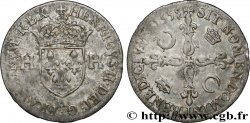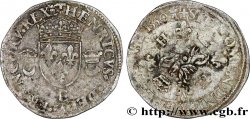Live auction - bry_399791 - HENRY II Écu d’or dit “aux croissants” n.d. Paris
Чтобы принять участие в торгах, вы должны войти в систему и стать подтвержденным участником аукциона. Войдите, чтобы сделать ставку. Ваш аккаунт будет подтвержден в течение 48 часов. Не ждите до закрытия торгов, чтобы зарегистрироваться.Сделав ставку на данный товар, вы вступаете в юридическое соглашение на покупку выбранного товара и нажатием кнопки «Сделать ставку» подтверждаете принятие вами условий интернет-аукционов cgb.fr.
Ставка может бить сделана только в полном эквиваленте евро. Торги закроются согласно времени, указанному в описании товара, все ставки, сделанные после закрытия торгов, учитываться не будут. Не следует откладывать предложение вашей ставки до последнего момента, так как система может не успеть обработать вашу заявку, и ваша ставка не будет принята. Более детальную информацию вы найдёте здесь: FAQ по интернет-аукционам.
Все ставки победителей подлежат комиссии 18%.
Все ставки победителей подлежат комиссии 18%.
| Оценить : | 12 000 € |
| Цена : | 7 977 € |
| Максимальная предлагаемая цена : | 7 977 € |
| Конец торгов : | 27 September 2016 16:07:18 |
| Участников : | 4 Участников |
Тип Écu d’or dit “aux croissants”
Дата: n.d.
Монетный двор / Город: Paris
Металл: gold
Проба: 958 ‰
Диаметр: 25 mm
Ориентация осей монеты: 12 h.
Вес: 3,37 g.
Редкость: R3
Комментарии о состоянии
Cet écu est frappé sur un flan large et régulier. Flan légèrement voilé
Ссылки в каталоге: :
Происхождение:
Exemplaire provenant de la collection L.G.
Лицевая сторона
Аверс: легенда: (SOLEIL) HENRICVS II DEI G FRANCOR REX, (ROSE DANS LES C).
Аверс: описание: Écu de France couronné, accosté de deux croissants ; au-dessous un A.
Аверс: перевод: (Henri II, par la grâce de Dieu, roi des Francs).
Обратная сторона
Реверс: легенда: + CHRS VINCIT CHRS REGNAT CHRS IMP, (ROSE DANS LES DEUX PREMIERS C).
Реверс: Описание: Croix fleuronnée et fleurdelisée cantonnée aux 1 et 4 d’un croissant, aux 2 et 3 d’une H.
Реверс: перевод: (Pour qu'il remplisse l'Univers).
Комментарий
L’une des monnaies les plus rares de la Renaissance française issue des premières frappes selon le procédé du moulin installé à Paris au moulin dit “des étuves” qui était située sur la Seine, en face de l’ancienne Monnaie qui se trouvait sous l’actuelle Samaritaine. Cette monnaie sans millésime a été frappée en 1552, suite à l’importation du procédé du balancier importé depuis Augsbourg par l’ambassadeur de Marillac. Les exemplaires sans millésime, d’après le FRANCIÆ IV, ne sont connus que par deux exemplaires, dont un écu est conservé dans les médailliers de la ville de Poitiers et l’autre découverte dans le trésor monétaire de Bunschoten (Pays-Bas publié par Enno van Gelder en 1960). Ces monnaies sans millésime ont été un temps considérées comme des essais.








 Cообщить об ошибке
Cообщить об ошибке Распечатать страницу
Распечатать страницу Отправить мой выбор
Отправить мой выбор Задать вопрос
Задать вопрос Consign / sell
Consign / sell
 Информация
Информация















